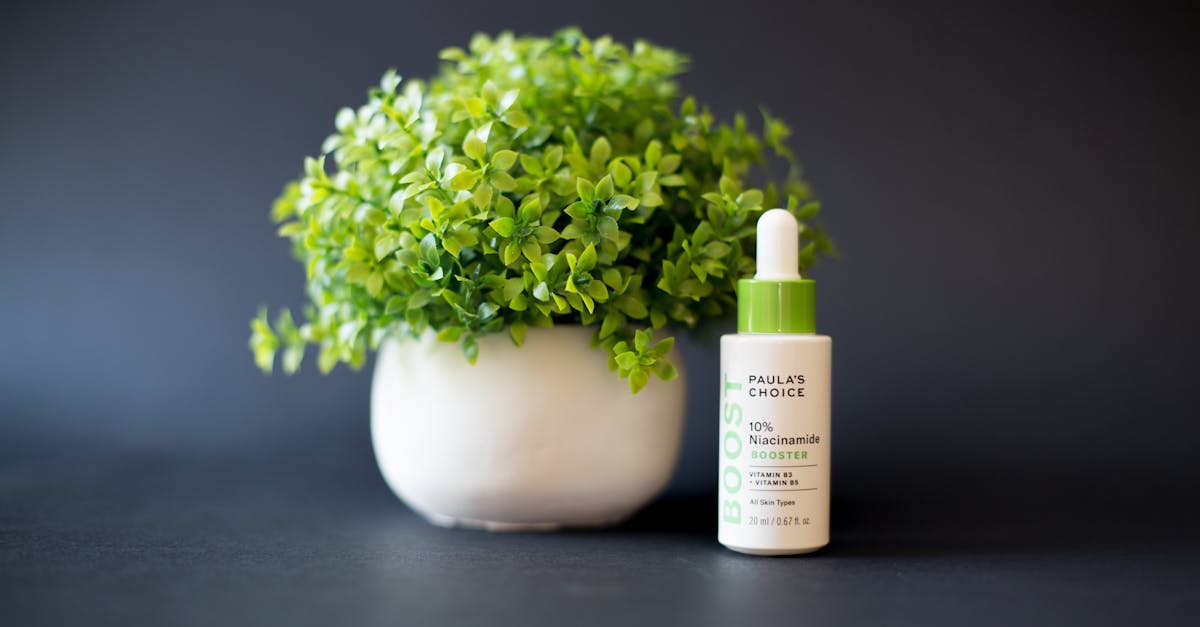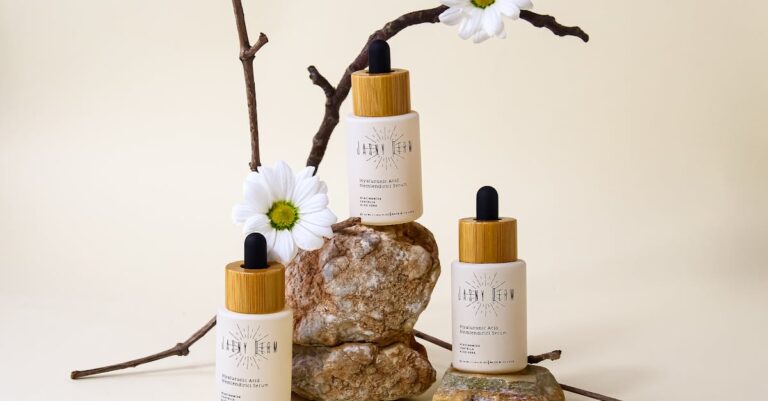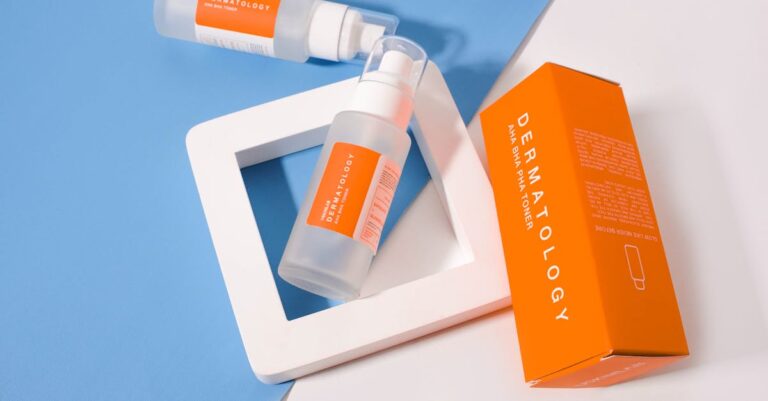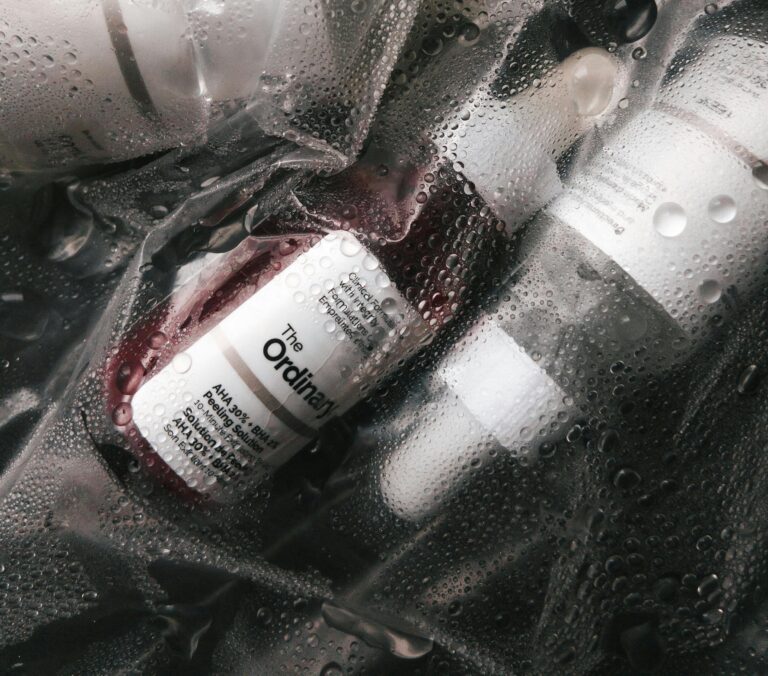In recent years, niacinamide has risen to superstar status in the world of skincare—and for good reason. This multitasking ingredient offers a wide range of benefits that appeal to virtually every skin type, from acne-prone teens to those focused on anti-aging. Known for its gentle yet effective properties, niacinamide has become a staple in countless products like serums, moisturizers, and even sunscreens.
But what exactly is niacinamide? How does it work, and why is it praised by dermatologists and skincare enthusiasts alike? This article takes a deep dive into the science, benefits, and practical use of niacinamide, so you can better understand how it fits into your skincare routine and why it may be the missing piece to healthier, more radiant skin.
What is Niacinamide?
Niacinamide, also known as nicotinamide, is a form of vitamin B3—an essential nutrient that supports many cellular processes in the body, including skin health. Unlike niacin (another form of B3), niacinamide does not cause flushing or redness, making it a gentler option for topical application.
As a water-soluble vitamin, niacinamide does not dissolve in oils and isn’t stored in the body, which means it must be replenished regularly—both through diet and skincare. When applied topically, niacinamide penetrates the outer layer of the skin and gets to work on a cellular level, helping to repair damage, reduce inflammation, and strengthen the skin’s natural barrier.
Because it’s non-acidic and stable in various formulations, niacinamide plays well with a wide range of other ingredients, making it a versatile addition to both simple and complex skincare routines.
How Niacinamide Works on the Skin
Niacinamide is more than just a buzzword—it’s a science-backed ingredient with a variety of mechanisms that support healthy, resilient skin. Here’s how it works on a cellular level:
Supports Cellular Energy and Repair
Niacinamide is a precursor to NAD+ (nicotinamide adenine dinucleotide), a coenzyme crucial for energy production and cellular repair. This means it helps skin cells function more efficiently, regenerate faster, and better respond to environmental stressors like UV rays and pollution.
Strengthens the Skin Barrier
Niacinamide stimulates the production of ceramides, free fatty acids, and cholesterol—all essential components of the stratum corneum (the outermost layer of skin). A stronger barrier helps the skin retain moisture and defend against irritants, allergens, and microbes.
Reduces Inflammation
Its anti-inflammatory properties make it effective for calming redness, blotchiness, and conditions like acne, rosacea, and eczema. It also soothes irritation from other active ingredients such as retinoids or exfoliating acids.
Fights Oxidative Stress
Niacinamide acts as an antioxidant, neutralizing free radicals caused by sun exposure and pollution. This helps prevent signs of premature aging like wrinkles and dark spots.
Regulates Oil Production
By helping to normalize sebum (oil) production, niacinamide reduces the risk of clogged pores and breakouts—particularly beneficial for those with oily or acne-prone skin.
Improves Cell Communication
Niacinamide enhances cell-to-cell signaling, which allows skin cells to better coordinate repair, hydration, and defense processes.
Benefits of Niacinamide
Niacinamide is often described as a “jack-of-all-trades” ingredient—and it lives up to the title. Here’s a breakdown of its most well-known and well-researched skincare benefits:
1. Improves Skin Barrier Function
Niacinamide enhances the production of ceramides and other lipids that keep the skin barrier strong. A healthy barrier means:
- Less water loss (hydration retention)
- Greater resistance to irritants
- Calmer, more resilient skin overall
This is especially useful for people with sensitive, dry, or eczema-prone skin.
2. Reduces Inflammation and Redness
Thanks to its anti-inflammatory properties, niacinamide calms:
- Acne flare-ups
- Red blotches
- Irritation from environmental stress or other skincare ingredients
It’s ideal for rosacea, post-acne marks, or generally reactive skin.
3. Regulates Sebum and Minimizes Pores
Niacinamide can reduce oil production, leading to:
- Less shine and clogged pores
- Smoother-looking skin texture
- Visibly tighter pores over time
This makes it a go-to for those with oily or combination skin.
4. Brightens and Evens Skin Tone
By inhibiting the transfer of melanin to skin cells, niacinamide helps fade:
- Dark spots
- Hyperpigmentation
- Post-inflammatory marks (like acne scars)
Skin appears more even and radiant with continued use.
5. Anti-Aging Support
Niacinamide stimulates collagen production and improves elasticity, helping to:
- Smooth fine lines and wrinkles
- Firm sagging or crepey skin
- Improve skin texture
It pairs beautifully with other anti-aging ingredients like retinol or peptides.
6. Boosts Hydration
By supporting the skin barrier and increasing natural moisturizing factors (NMFs), niacinamide enhances hydration. It often works synergistically with hyaluronic acid for a plump, dewy effect.
Scientific Evidence
While many skincare ingredients ride waves of hype, niacinamide is one of the rare few that’s consistently backed by clinical research. Dermatologists have studied it for decades, and the results are compelling.
Here’s a look at some key findings:
Acne and Sebum Regulation
A 1995 study published in the International Journal of Dermatology showed that a 4% niacinamide gel was just as effective as 1% clindamycin (a prescription antibiotic) in reducing acne over eight weeks—with fewer side effects.
Another study found that niacinamide significantly reduced sebum production, making it an excellent option for oily and acne-prone skin.
Hyperpigmentation and Skin Tone
A study in the British Journal of Dermatology (2002) demonstrated that a 5% niacinamide cream, used twice daily, reduced hyperpigmentation and improved skin tone in as little as four weeks.
It works by inhibiting melanosome transfer, which prevents excess pigmentation from showing up on the skin’s surface.
Barrier Repair and Moisture Retention
Research has shown that niacinamide enhances epidermal lipid synthesis, which helps reinforce the skin barrier. A study in Cutis (2005) found that 2% niacinamide improved the skin’s moisture content and reduced transepidermal water loss (TEWL) in aging skin.
Anti-Aging and Wrinkle Reduction
One double-blind, placebo-controlled study found that topical niacinamide significantly reduced fine lines, sallowness, and skin roughness after 12 weeks of use. Participants also saw improvements in elasticity and skin firmness.
Anti-Inflammatory and Redness Reduction
Studies have shown niacinamide’s ability to reduce cytokine activity in the skin, making it useful for conditions like rosacea, eczema, and sensitive skin.
Summary
| Effect | Studied Concentration | Key Result |
| Acne reduction | 4% | As effective as clindamycin |
| Skin brightening | 5% | Visible results in ~4 weeks |
| Barrier improvement | 2%+ | Reduced water loss, improved hydration |
| Wrinkle smoothing | 5% | Noticeable improvement after 8–12 weeks |
These results make it clear: niacinamide is not just trendy—it’s clinically proven. It has a strong track record of being both effective and well-tolerated, even for sensitive skin types.
How to Use Niacinamide in Your Skincare Routine
One of niacinamide’s best qualities is how versatile and easy it is to incorporate into your routine. Whether you’re a skincare minimalist or a 10-step-routine kind of person, niacinamide can fit in seamlessly.
When to Use It: AM or PM?
- Safe for both morning and night use
- Many people use it twice daily for consistent results
- In the morning, pair it with SPF for added environmental protection
- At night, combine it with hydrating or repair-focused products
Where It Goes in Your Routine
Apply niacinamide after cleansing, typically in this order:
Cleanser → Toner (optional) → Niacinamide serum → Moisturizer → SPF (AM only)
If you’re layering multiple serums:
- Use water-based serums first
- Niacinamide is usually thin and fast-absorbing, so it often comes early
What Concentration Should You Use?
| Concentration | Best For | Notes |
| 2–5% | Sensitive skin, beginners | Gentle but effective |
| 5–10% | Oily, acne-prone, hyperpigmented skin | Most common in commercial products |
| >10% | Experienced users | May irritate some skin types |
📝 Note: Higher isn’t always better. Studies show benefits starting at just 2%, and too high a concentration might lead to flushing or irritation in sensitive skin.
How Long Before You See Results?
- Hydration & oil regulation: ~1–2 weeks
- Texture and pore visibility: ~2–4 weeks
- Hyperpigmentation or fine lines: ~6–12 weeks
Consistency is key—niacinamide works gradually but steadily over time.
Tips for Best Results
- Apply to damp skin for better absorption
- Let it absorb fully before layering other actives
- Always use sunscreen to protect the improvements it helps achieve
- Store in a cool, dry place—most formulas are stable, but it’s good practice
What Ingredients Can You Combine Niacinamide With?
One of niacinamide’s superpowers is its compatibility with a wide range of skincare ingredients. It plays well with others, making it a versatile addition to just about any routine.
Ingredients That Pair Well with Niacinamide
Hyaluronic Acid
- Why it works: HA hydrates the skin, while niacinamide helps lock in moisture by strengthening the skin barrier.
- Perfect for: Dehydrated or sensitive skin types.
Vitamin C (Ascorbic Acid)
- Old myth: They cancel each other out.
- Truth: Modern formulations show they’re perfectly compatible and can enhance brightening effects together.
- Pro tip: If using separate serums, you can layer vitamin C first, followed by niacinamide.
Retinol
- Why it works: Niacinamide reduces irritation and boosts barrier function, making it a great retinol sidekick.
- Pro tip: Apply niacinamide before retinol or use a product that contains both.
Peptides
- Why it works: Both support collagen production and skin firmness.
- Best for: Mature or sagging skin.
Centella Asiatica (Cica)
- Why it works: Combines calming and anti-inflammatory benefits, great for sensitive or redness-prone skin.
Ceramides
- Both niacinamide and ceramides reinforce the skin’s moisture barrier, making this combo ideal for dry or compromised skin.
Caution with Acids (AHAs/BHAs)
Niacinamide can be safely used with exfoliating acids, but a few things to keep in mind:
- Mixing strong acids (like glycolic or salicylic) with niacinamide at the same time may cause temporary flushing or sensitivity, especially in reactive skin.
- If you’re using high concentrations of either, consider using acids at night and niacinamide in the morning, or applying them in separate steps with a buffer product (like a hydrating toner or moisturizer) in between.
Ingredients to Avoid?
None definitively. Niacinamide is remarkably stable and rarely conflicts with other actives—just watch for over-layering too many potent ingredients at once, which can overwhelm the skin.
Potential Side Effects or Concerns
While niacinamide is generally well-tolerated and considered safe for most skin types, even the gentlest ingredients can cause issues if not used properly or in the right context. Here’s what to look out for:
Mild Irritation or Redness
- Most commonly seen with high concentrations (10%+)
- Can result in:
- Temporary flushing
- Tingling or burning sensation
- Increased sensitivity
Tip: Start with lower concentrations (2–5%) and work your way up.
Niacin Flush
- Rare, but possible—especially if the product lowers pH significantly or if your skin is freshly exfoliated.
- This reaction is not harmful but can look like:
- Red, blotchy patches
- Warmth or heat
- It usually subsides within 30 minutes
Tip: Apply to clean, dry skin, and don’t mix it immediately with potent exfoliants or acids unless you know your skin can handle it.
Product Layering Overload
Niacinamide on its own is great—but piling on too many actives (retinol, acids, vitamin C, etc.) in a single routine can overwhelm the skin, leading to:
- Breakouts
- Barrier damage
- Irritation
Tip: Introduce niacinamide slowly and avoid testing it alongside multiple new products.
Allergic Reactions (Rare)
- Some people may react to other ingredients in niacinamide products (preservatives, fragrances, etc.), not niacinamide itself.
- Signs include:
- Itchy rash
- Swelling
- Persistent redness
Patch Test: Apply a small amount behind the ear or inside the forearm and wait 24 hours before full use.
Who Should Use Niacinamide?
The short answer? Almost everyone. Niacinamide is one of the rare ingredients that delivers benefits across all skin types, tones, and ages without being overly harsh or reactive. Here’s a closer look at who will benefit the most:
All Skin Types
| Skin Type | Why It Works |
| Oily | Regulates sebum, tightens pores |
| Dry | Strengthens barrier, improves hydration |
| Combination | Balances oil zones, soothes dry patches |
| Sensitive | Calms inflammation, reduces redness |
| Mature | Boosts elasticity, smooths fine lines |
| Normal | Maintains balance and resilience |
People with Acne or Breakouts
- Reduces inflammation and sebum
- Fades post-acne marks and uneven skin tone
- A gentler alternative to more aggressive acne treatments
Those with Redness or Rosacea
- Calms visible redness and reactive skin
- Strengthens the skin’s tolerance to external stressors
Hyperpigmentation & Uneven Skin Tone
- Fades dark spots, sun damage, and discoloration
- Safe for all skin tones, including deeper complexions prone to post-inflammatory hyperpigmentation (PIH)
Anti-Aging Seekers
- Improves elasticity, softens fine lines, and smooths rough texture
- Supports collagen production without the irritation associated with retinol
Barrier-Damaged Skin
If your skin feels tight, flaky, or irritated from over-exfoliation, environmental exposure, or too many actives, niacinamide helps:
- Rebuild the barrier
- Soothe inflammation
- Prevent further moisture loss
When to Avoid or Use With Caution
- If you’re currently reacting to multiple products, take a break and reintroduce niacinamide after your skin has calmed down
- Always patch test, especially if you’re using high concentrations or have known sensitivities
Niacinamide in Products
Niacinamide is found in a wide range of skincare products—serums, moisturizers, cleansers, masks, and even sunscreens. Knowing how to identify it, and what format works best for your needs, can help you make smarter choices when shopping.
Common Product Types
Serums
- Usually contain higher concentrations (5–10%)
- Best for targeting specific concerns like dark spots, oiliness, or fine lines
- Absorbs quickly and layers well under other products
Moisturizers
- Typically formulated with 2–5% niacinamide
- Great for daily maintenance, especially if you’re already using other actives
- Good for sensitive or dry skin types
Cleansers & Toners
- Lower contact time = less potent, but still beneficial
- Supportive for those easing into niacinamide or with very sensitive skin
Masks or Treatments
- Often combined with soothing or hydrating ingredients
- Ideal for a weekly boost
SPF Products
- Some sunscreens include niacinamide for added antioxidant protection and to help with inflammation or hyperpigmentation
How to Spot It on the Label
- Listed as niacinamide or nicotinamide
- Often found near the top third of the ingredient list in effective concentrations
- Some products will highlight the percentage (e.g., “10% Niacinamide”), while others may not
Popular Product Examples
| Product Name | Key Features |
| The Ordinary Niacinamide 10% + Zinc 1% | Affordable, high-strength, great for oily/acne-prone skin |
| Paula’s Choice 10% Niacinamide Booster | Lightweight serum, mixes well with other products |
| CeraVe PM Facial Moisturizing Lotion | Contains ceramides + niacinamide, perfect for barrier repair |
| Naturium Niacinamide Serum 12% Plus Zinc | Potent but gentle formula with hydration support |
| La Roche-Posay Mela-D Pigment Control Glycolic Serum | Combines niacinamide with glycolic acid for brightening |
Frequently Asked Questions (FAQs)
Niacinamide might be simple to use, but it still raises a lot of questions—especially when you’re building a skincare routine. Let’s break down some of the most common ones:
Can I use niacinamide every day?
Yes! It’s safe for daily use—even twice a day. Most people can tolerate it well with consistent use.
How long does it take to see results?
- Hydration and oil control: 1–2 weeks
- Even skin tone and reduced redness: 2–4 weeks
- Fading dark spots and smoothing wrinkles: 6–12 weeks
Patience pays off—results build gradually with consistent use.
Can I mix niacinamide with vitamin C?
Absolutely. Despite old myths, recent studies and modern formulations show they can be safely used together. You can:
- Use a combo product, or
- Apply vitamin C first, then layer niacinamide on top
What’s the ideal percentage to use?
- 2–5%: Great for beginners, sensitive skin, or barrier repair
- 5–10%: Best for brightening, oil control, and acne support
- 10–12%+: Higher potency—can be effective but may irritate sensitive skin
Is niacinamide better than vitamin C or retinol?
They do different things:
- Niacinamide is gentler, more barrier-focused, and multitasking
- Vitamin C is a powerful antioxidant and brightener
- Retinol boosts cell turnover and collagen
They’re complementary, not interchangeable—and can all work in a routine with proper layering.
Can I use niacinamide with exfoliating acids (AHA/BHA)?
Yes, but space them out if you have sensitive skin:
- Try using acids at night and niacinamide in the morning
- Or, apply a hydrating buffer (like a toner or moisturizer) between the two
Is niacinamide safe during pregnancy or breastfeeding?
Yes! It’s considered one of the pregnancy-safe ingredients, unlike retinoids or certain acids.
Can niacinamide clog pores?
Not usually. In fact, it helps reduce clogged pores by regulating oil. But if you notice breakouts, check for other comedogenic ingredients in the formula—not the niacinamide itself.
What if niacinamide makes my skin red or itchy?
This could be:
- A reaction to a high concentration
- Flushing, which is temporary
- An allergy to another ingredient in the product
Start with lower strengths (2–5%), patch test, and simplify your routine while introducing new actives.
Conclusion & Key Takeaways
Niacinamide isn’t just a trendy skincare buzzword—it’s a dermatologist-approved powerhouse backed by solid science and praised for its versatility, gentleness, and effectiveness. Whether you’re battling breakouts, dullness, sensitivity, or aging, there’s a high chance niacinamide can help.
Why Niacinamide Deserves a Spot in Your Routine
- Multi-tasker: Fights acne, reduces oil, fades dark spots, calms redness, strengthens the skin barrier, and even smooths wrinkles.
- Universally friendly: Works on all skin types, tones, and ages.
- Layering champ: Pairs well with most ingredients, from vitamin C to retinol.
- Gentle yet effective: Delivers results without causing irritation—especially at 2–5% concentrations.
- Backed by research: Clinically proven to work across a wide range of skin concerns.
Quick Start Guide
| Step | Tip |
| Choose a form | Serum for potency, moisturizer for support |
| Start slow | 2–5% is enough to see results |
| Be consistent | Use daily for best results |
| Layer smart | Combine thoughtfully with other actives |
| Stay patient | Give it 4–12 weeks to shine |
Final Thought
If your skincare routine could use a little clarity, balance, and glow, niacinamide is one of the best ingredients to reach for. It’s not flashy, but it works—and it’s one of the rare few that can truly be called a skincare staple.




